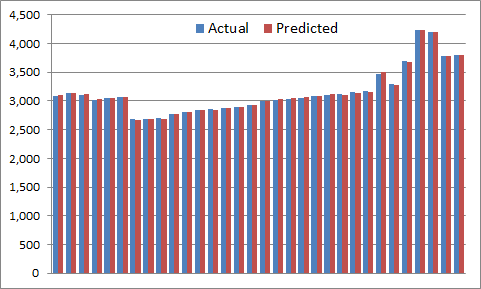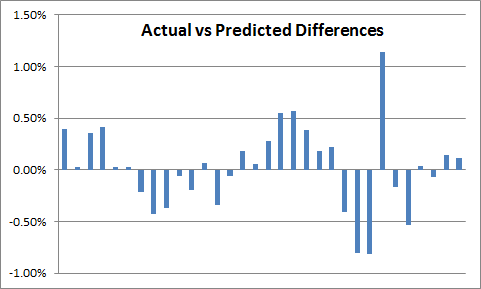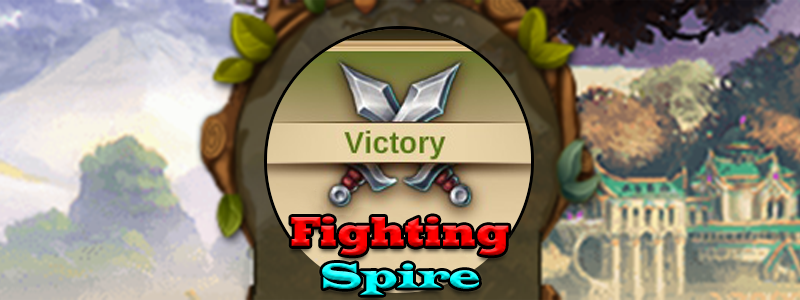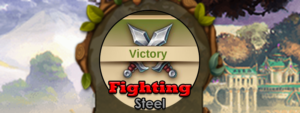Alright, so there were many questions and speculations about how Elvenar Spire squad size(s) are calculated. As far as I can tell, the calculation was never disclosed, except for statements that many different things have an impact on that – including total AW levels. But what is the formula? While the work is still ongoing, today I can show some of the preliminary results. Call it Iteration 1 😉
Table of Contents
* – * – *
Data Collection
So over the last few months I’ve been collecting data on the Spire, and now I am running a wider data collection effort. You can contribute to it in the comments below or on the forums here:
Spire squad size calc – we need your data!
The post in the link above also explains what’s needed and how to get it. We need your input! The more people participate, the faster we can converge to a reasonable model. Hopefully 😉
Definitions
Before we jump into the modeling, let me just say that when I say Spire squad size calculation I mean your own Spire squad size in the very first encounter (e.g. encounter 1 at stage 1 – Gateway). Once you know that number, you can calculate the rest of the Spire squad sizes in all the other encounters (both your own and your enemy’s). I already have that data, and will make a post on this some time later. For now, let’s work on the still unresolved issue of calculating that base Spire squad size number.
Problem Domain
So for Iteration 1 let’s focus on end-game situations. The reason for that is that it keeps the number of variables smaller. People in the end game have (mostly) the same research status, usually have maxed out upgrades etc. That’s not to say that we won’t be going for solutions for non-end-game – we will, but let’s try to knock some of the variables out with the easier cases.
So I’ve got 32 datapoints so far that would cleanly fall under the end-game scenario. The things that differ here are as following:
- Number of negotiated provinces
- Total number of Ancient Wonder levels (and obviously different combinations of these)
- Regular Squad Sizes, as not everyone did the same number of optional SS upgrade techs
- Number of unlocked expansions (regular and premium)
Just to be clear, these are the datapoints that we’ve collected so far. There are more things that can be different, and it is entirely possible that some of these other variables might be factors in the Spire squad size calculations. But let’s start with these and see if we need some other things to explain the variances.
Iteration 1 Model
So I won’t bore you with math (I have tried that before ;)). Let’s just say that after carefully massaging the data, here is a formula that works pretty well for the end-game scenarios that I looked at so far:
SSo = 6.25*AWL + 25*Exps – 1031
where
- SSo – own base Spire squad size (first encounter)
- AWL – total AW levels
- Exps – total number of unlocked expansions (including starting ones)
Model Accuracy
And that’s it. Let’s see how well it describes existing data. So here is a chart of actual vs predicted base Spire squad size for all these 32 scenarios:

So we have squad sizes vary within the 2.5-4.5K range, and for all of these the fit is pretty good, if I say so myself 😉 We have to look at just differences to even figure out that scale:

So most of the relative differences are within 0.5%. Not too bad for iteration 1 😉
Interpretation
So, is it success then? Well, yes and no 😉 Let’s talk about what does all this mean, and how to interpret the results. So let’s put it right out there. Is the formula above a correct formula for Spire squad size calculation? The answer to that is NO. Let me explain why.
At the very least, I can assure you that this formula certainly does not work for non-end-game scenarios. At the very least this means that this fudge 1031 number at the end is actually a bunch of other variables – they just so happen to have the same or similar values for end-game players right now.
Even for end-game the formula is not guaranteed to be accurate, or even include all the right factors. We’ll keep monitoring new data and see if it still lines up. I’ll also be looking at some more extreme examples (much higher AW levels / provinces / expansions than common). We’ll see if it still works on those outliers. So again, send me more data! 😉
What If?
Now, having said all that, let’s acknowledge the fact that model fit is pretty damn good so far on the data that we have (and that’s a decent number of datapoints). What that means is that there is a pretty decent chance that these two variables – AW levels and expansions – explain most of the variability in the end game. What that would mean is following:
- Number of negotiated provinces has no impact on the calculation
- Regular squad size has no impact on the calculation
- Training size has no impact on the calculation
- AW composition has no impact on the calculation (only total levels)
- There are no changes based on week / tournament type
Again, none of the above is confirmed, but these would be correct if the model above would be correct.
Incremental View
Another way to look at the model above is in incremental terms. What it tells you that for each 4 AW levels you’d be gaining 25 base Spire squad size on average. Incidentally, that’s the same amount you’d be getting if you place another expansion. Now if we assume that this simplified model is actually a variant of the full model, then that would mean that these incremental relationships would still hold for non-end-game cases. We’ll see if that’s the case.
Conclusion
So again, while the model above is certainly not correct, it is still can be quite useful. I mean, we know that Newton’s mechanics is technically not correct (as it doesn’t account for relativity). And yet for most practical reasons it is good enough. So far our Iteration 1 model is a pretty good fit for the end-game scenarios.
I am certain we will revisit this when we’ll get more data.


![Read more about the article Elvenar – Manual Fighting – Gems Tournament – 2019-01-10 [Thor]](https://minmaxgame.com/wp-content/uploads/2019/05/Emf-2019-01-08-gems-300x113.png)
![Read more about the article Elvenar Woodelves – Day 14 [43%]](https://minmaxgame.com/wp-content/uploads/2019/03/WoodelvesFeaturedD14-300x113.png)
![Read more about the article Elvenar Orcs – Day 28 [74%]](https://minmaxgame.com/wp-content/uploads/2019/03/OrcsFeaturedD28-300x113.png)

![Read more about the article Elvenar Woodelves – Day 21 [63%]](https://minmaxgame.com/wp-content/uploads/2019/03/WoodelvesFeaturedD21-300x113.png)
